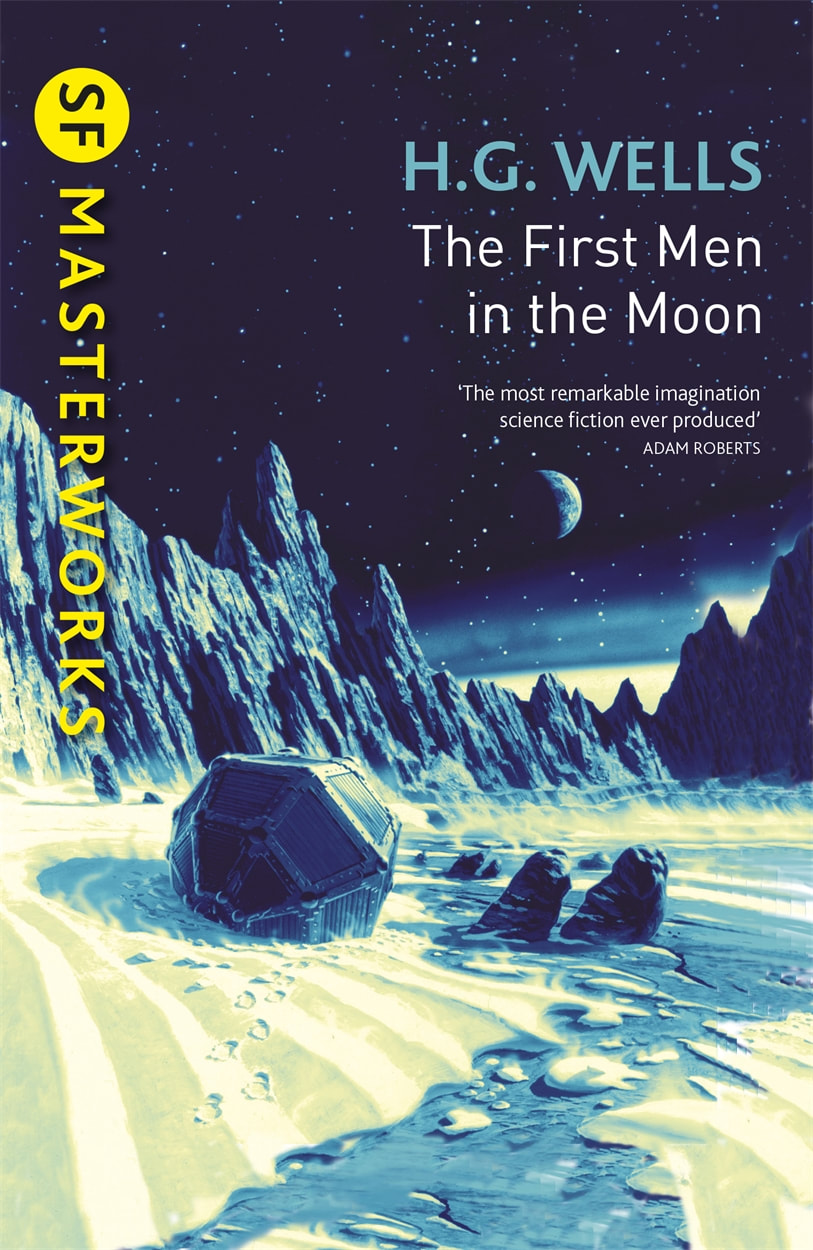The story is told from Bedford’s perspective, as he recalls the details of that fantastic voyage. He and Cavor make an entertaining duo, and the early portions of the novel are surprisingly funny, the two of them coming across as likeable idiots. When they get to the moon, however, the tone changes as they face danger and unforeseen challenges. It’s this first half of the novel that’s the most engaging. You feel the thrill of intrigue and discovery as Bedford and Cavor make their way across the surreal lunar landscape.
Also intriguing is Wells’ depiction of the aliens they meet, the Selenites. The insectile ‘mooneys’, as Cavor calls them, are a fascinating creation, an intelligent species living in a massive series of tunnels underneath the moon’s surface. Their hierarchial society has been thought-out in detail, and is a reflection of the turn-of-the-century world that Wells lived in. It’s unfortunate that when they’re introduced, the narrative drive slows down and never quite picks up in the way it started off. Still, there’s enough going on to keep the reader interested.
What I liked was that nowhere in the book was an attempt to portray scientific accuracy. In 1901, it was known that the moon was only rock and dust, and so Wells’ story was pure invention and imagination. That’s why the story hasn’t dated and is still entertaining and enjoyable today.
H.G. Wells was a pioneer, a great thinker who remains highly influential to this day. He’s been one of my favourite writers since I read The Time Machine at the age of 11 (on a school trip, instead of socialising). The First Men in the Moon is closer to modern novels than his earlier works, with a fuller plot and structure, and though dated in places, it’s just as good. Science fiction writers have inspired technology as much as predicted it, and there’s no doubt that the scientists and engineers in 1960s NASA were big readers of the genre, so in that respect this book has made history. Let nobody say that art and literature have no uses.
Review by Charlie Alcock

 RSS Feed
RSS Feed
